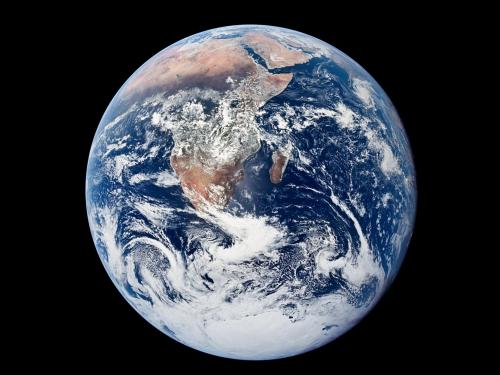
Stories of daring, stories of technological feats, stories of prevailing against the odds ... these are the stories we tell at the National Air and Space Museum. Dive in to the stories below to discover, learn, and be inspired.
Showing 21 - 30 of 104

February 27, 2022
Using an artistic technique dating back to the Renaissance era known as a “triangle” perspective, artist Hubert Jackson establishes a layered hierarchy to convey contributions made by Black women and men in the space program.

February 08, 2022
Photographs of the Earth from the Moon taken by Apollo astronauts had a huge impact back on Earth. From changing how humans viewed the fragility of Earth, to inspiring artists across the globe, explore the history of two such photographs.

February 01, 2022
How we picture space and our world within it has changed dramatically in the second half of the 20th century.

January 04, 2022
Remembering Dale Snodgrass, see the sun through a new lens, become a space scientist, and more!

December 12, 2021
Astronomer Henrietta Swan Leavitt lived a short but deeply impactful life, during which her achievements failed to receive sufficient recognition. On the centennial of her death, we reflect on her life and legacy.

November 10, 2021
The image of the space–suited Apollo 11 astronaut standing and facing the camera became an iconic symbol of American accomplishment and was reproduced in books, films, television, and items of popular culture.

October 27, 2021
The Sun has been an inspiration in our creation of paintings, poems, music, stories, and sculptures, to name a few. Explore how artists express and depict the Sun in works throughout the Smithsonian’s collections.

October 10, 2021
Artist Raquel Forner became one of the earliest artists to depict outer space in paintings and continued to create images of space almost exclusively throughout her life. Forner’s humanistic vision in expressed her work which was a crucial note of optimism during the uncertain period of Cold War politics. Explore Forner's vision of space through her unique paintings.

May 28, 2021
During World War II the United States government used colorful and catchy posters to build public support for the war and remind pilots, mechanics, and other aviation workers to follow best practices for safety, resource preservation, and efficiency.

May 13, 2021
Did you know the National Air and Space Museum has a huge art collection? Yeah, we keep that secret pretty well. It all STEMs (see what we did there?) from a program organized by NASA beginning in the 1960s where a small number of American artists got tons of access to launch sites, clean rooms, space suits, spacecraft—you name it, they painted it.
